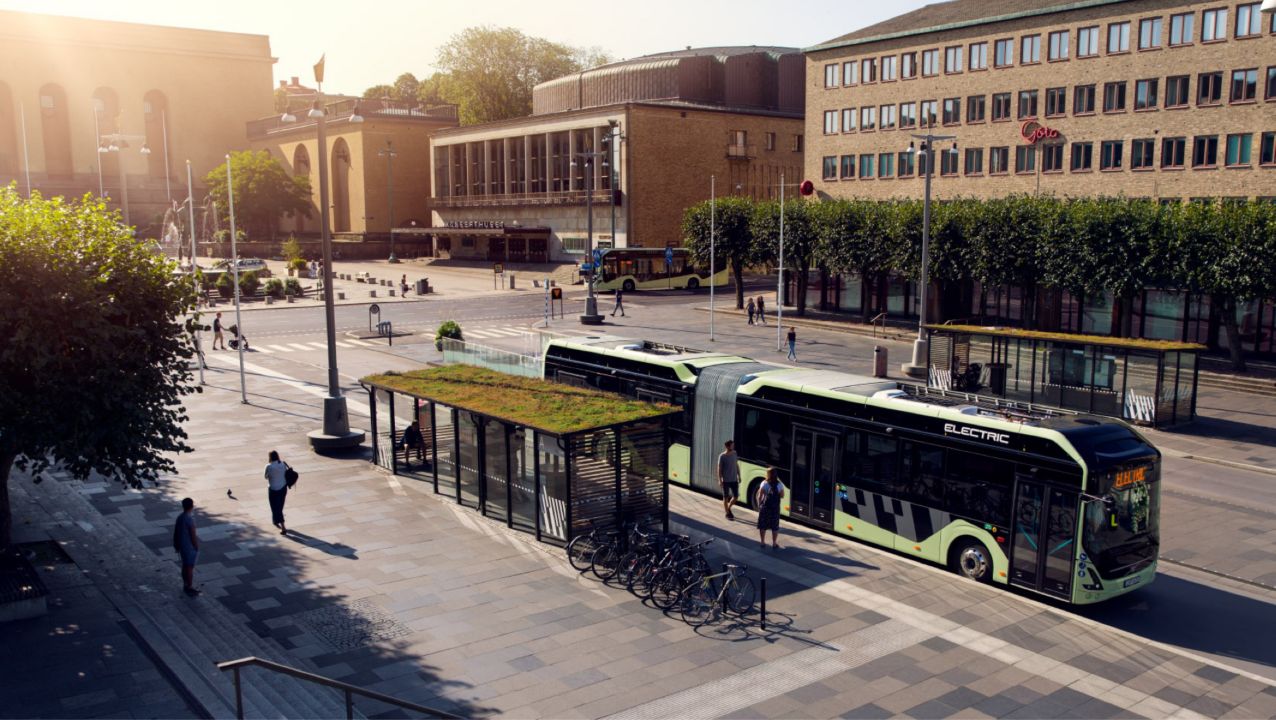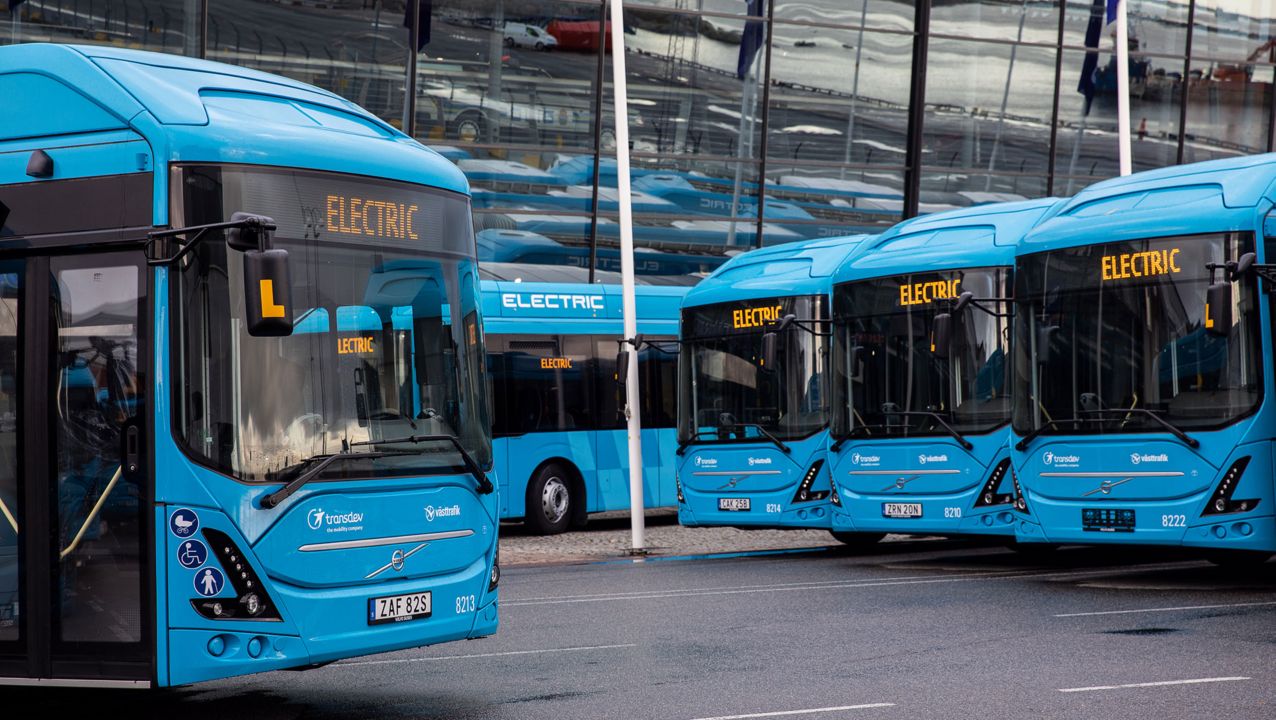E-mobility
Go electric with Volvo
City after city around the world is taking steps towards achieving zero emissions. At Volvo, however, we have set our sights a little higher. Because we believe people deserve more than just clean air and less noise. We believe people deserve safe, smart, reliable and truly sustainable public transport with a minimum of environmental impact. That is why you should go electric with Volvo.
Sustainability beyond emissions
At Volvo, we take responsibility for the full environmental impact of our products and services, all along the value chain, from cradle to grave. We make sure that materials, manufacturing, operation and recycling meet the highest environmental standards. We keep track – and we publish the results. As our customer, you will share our drive towards a world of circularity and products that do not cause unnecessary harm to humans or the planet.
Safety beyond the bus
Our ambition is to offer the world’s safest electric bus system. Volvo has been pioneering safety innovation for almost a century, and in a true zero city, we believe in zero accidents. Today we lead the development with superior product safety, driver support and connected solutions. But safety encompass so much more. Driver training, charging solutions, high-voltage safety in the depot, and not least, cyber security which are very important areas for us at Volvo.
Reliability beyond delivery
As a global supplier of electric vehicles, Volvo has implemented complete electric bus systems with charging infrastructure in a number of cities. Through long-term and close cooperation with customers and partners, we tailor each e-mobility solution to each individual city. With our world-wide service network we are always present, ready to support and ensure the reliability and efficiency our customers demand. For us it’s about delivering zero unplanned downtime, and that is a huge responsibility.
Complete electromobility solution
When a city decides to go electric, the change has implications on much more than replacing vehicles. Energy supply, daily maintenance, charging strategy and vehicle deployment planning are just a couple of the areas subject to new prerequisites. Volvo offers complete electric mobility solutions developed and configured in close cooperation with each city. It includes everything from efficient electric buses and relevant services to open interface infrastructure and implementation.
An electromobility partner for the future
How do you future-proof the development of public transport in a city? Volvo has been pioneering the development of e-mobility solutions for many years, and we share considerable expertise in the entire Volvo Group.
Create your Zero City with Volvo Buses
Cities around the world are working to solve the major challenges of urbanisation: air quality, noise and congestion. At Volvo, we want to help cities in their transformation towards zero cites, with zero emissions, zero noise, zero congestion and zero accidents. With a complete electric mobility solution, efficient electric buses and our experience of implementation as well as future-proof technologies.
Want to find out more?
Talk to a sales person
Find a Volvo sales representative dedicated to support you in fulfilling your daily duties as efficiently and profitably as possible.
Find a dealer
Volvo has one of the most comprehensive service networks in the industry, with more then 1,500 dealers and service centres worldwide.


